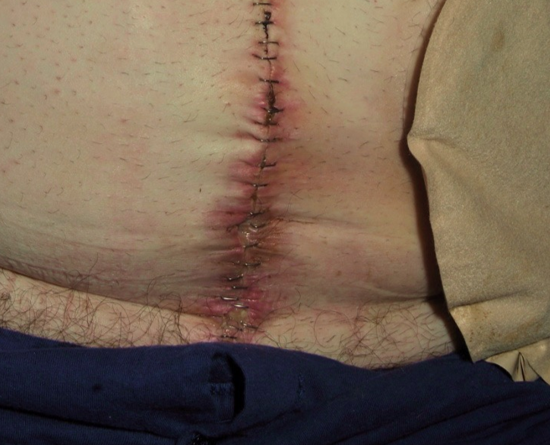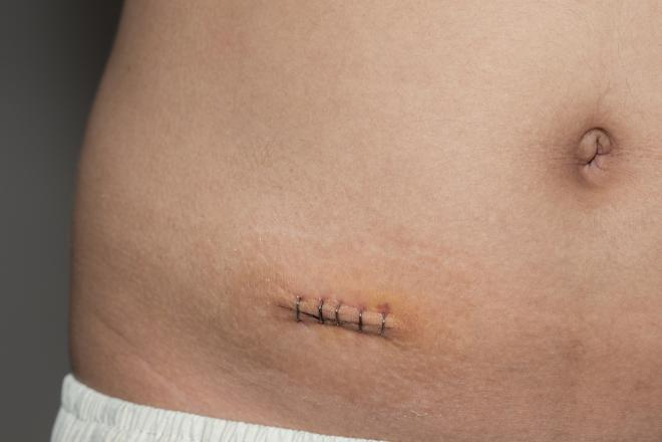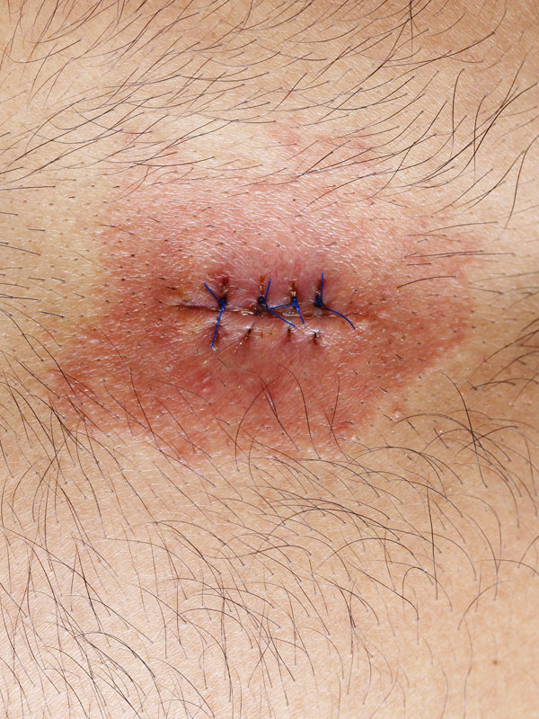
Surgical Site Infection
GlobalSurg II eLearning module
Created by GlobalSurg Collaborative / @GlobalSurg
Use the arrows in the botttom of the screen or on your keyboard to navigate, or the arrow keys on your keyboard. You can also swipe left or right on touchscreen devices. Blue text indicates links to other resources.GlobalSurg II
The primary aim of GlobalSurg II is:
“To determine Surgical Site Infection (SSI) rates across low, middle and high human development index (HDI) countries”
To do this, the primary outcome measure will be:
“Superficial or deep incisional surgical site infection (SSI) within 30 days of surgery”
Why is this important?
We need to make sure everyone is measuring surgical site infections in the same way.
This should mean:
- Improved data quality and accuracy
- Increased validity of the primary outcome measure
Therefore, this module is compulsory for all collaborators.
This should take 10 minutes to complete.
What causes an SSI?
- Bacterial infection is the most common cause of SSI
- All wounds will have some form of bacteria colonising them, but not all bacteria cause infection
- The most common bacteria are Staphylococcus Aureus, coagulase negative Streptococci, and Escheria Coli.
- Fungal species and viruses very rarely cause SSI.
- Certain Risk factors can increase the chances of SSI.
Patient specific factors
- Diabetes Mellitus
- Obesity
- Cigarette smoking
- Steroid use
- Critical illness
- Malnutrition
- Hypothermia
If patients have certain risk factors, they will be more likely to suffer from an SSI.
Examples of factors that make SSI more likely include:
Operation specific factors
- They have open surgery
- They have an emergency operation
- The operation involves opening the bowels
- The operation involves infected tissue (absecesses or debridement of necrotic tissue)
Bacteria in surgical wounds can be endogenous (from the patient) or exogenous (from outside of the patient- foreign body, non-sterile instruments).
Patients are more likely to develop SSI if:
Select right or swipe to next section
Diagnosis of SSI
There are many criteria for diagnosing SSI.
It is very important everyone in GlobalSurg II is using the same criteria.
For GlobalSurg II we are using an adapted version of the Centers for Disease Control and Prevention (CDC) criteria.
The GlobalSurg II criteria
To diagnose an incisional SSI (either superficial or deep), the patient must have at least one of:
- Purulent drainage from the incision.
- Abscess within the wound (detected clinically or radiologically).
Or one of the following combinations:
- Pain or tenderness or localised swelling or redness or heat or fever.
- AND the incision is opened deliberately or spontaneously opens (dehisces).
Important considerations
- A positive wound swab (which grows bacteria) does not indicate there is an SSI. It may simply represent wound colonisation. SSI is a clinical or radiological diagnosis.
- Pain, swelling and redness can be present in any healing surgical wound. For SSI diagnosis the wound must spontaneously open or be opened for control of the infection.
When to assess for SSI
Some SSIs may occur after discharge from hospital and could be missed.
For GlobalSurg II we recommend:
- Assessing the patient and case notes regularly up to the point of discharge.
- We strongly encourage teams to assess patients at 30-days, in-person or via telephone.
- If this is not possible, SSIs may be identified through discharge summaries, emergency department notes or clinic letters.
SSI quiz
Question 1
Alexander is a 40-year old man who underwent an emergency Hartmann's procedure following a road-traffic incident.
He is intubated and ventilated on an intensive care unit.
He is maintaining a blood pressure of 108/65, and has a mild pyrexia of 37.9 degrees Celsius
You examine the incisional site and find the wound to be red and hot at its distal end. There is a small amount of dehiscence.
Alexander's wound looks like this

Does Alexander have an SSI?
Select the answer below
Alexander does have an SSI. As he is unconscious, Alexander cannot report tenderness. However, he has redness, fever and the wound has begun to dehisce. This is diagnostic of an SSI.
Why is Alexander at a higher risk of SSI?
Select all that apply
He has had an operation that has opened the gastrointestinal tract, meaning it is a dirty or contaminated procedure. Emergency surgery and critical illness also increase the risk of SSI.
Question 2
Emma is a 14 year old girl who undergoes an appendicectomy for simple appendicitis.
5 days after her operation, at home, she develops a pain and mild swelling around her scar and her parents are worried about an infection.
You see Emma in clinic and examine her wound. There is no discharge and the wound edges are closed and healing well.
Emma's wound looks like this

Does Emma have an SSI?
Select the answer below
Whilst Emma has pain, there is no evidence of spontaneous dehiscence and the wound has not required opening, therefore SSI cannot be diagnosed.
Question 3
Nasir is a 30 year old man who has had an open right hemicolectomy for Crohn’s disease, which he is currently taking steroids for.
5 days after the operation you review his wound. There is no discharge, redness, swelling, or dehiscence.
Nasir is feeling hot and has a temperature of 39.0 degrees Celsius. He is clammy, with a pulse rate of 140.
You decide to take him back to theatre, where you drain some purulent fluid from the deep fascial space.
Nasir's wound looks like this

Does Nasir have an SSI?
Select the answer below
Nasir does have an SSI. There is no discharge from wound and it has not dehisced. However, there is clinical evidence of abscess within the deep space found intra-operatively. This allows diagnosis of SSI.
Why is Nasir at a higher risk of SSI?
Select all that apply
Age does not affect the risk of SSI. He may be immunosuppressed and malnourished due to his Crohn's disease. Elective surgery does not increase the risk of suffering an SSI.
Question 4
Paulo is a 45 year old man, who had a cholecystectomy 4 days ago.
He complains of redness and pain around one of his wounds.
You find a purulent discharge coming from his wound, with localised swelling in the subcutaneous tissues.
Paulo's wound looks like this

Does Paulo have an SSI?
Select the answer below
Paulo does have a surgical site infection (SSI). This is because the surgical site is red and hot, with a purulent discharge coming from the superficial incisional space. SSI can therefore be diagnosed.
Summary
- Surgical site infection is a common complication of abdominal surgery.
- Patient and operative factors contribute to higher SSI risk in some patients
- We will be using adapted CDC criteria for SSI for the GlobalSurg II study. This will measure the 30-day SSI rate (followed up in-hospital, and in outpatient clinics)
Next steps
If there's any questions you have about the project get in touch via the website.
On the next pages you can download a copy of this module and get a certificate of completion emailed to you.
Export this module
To get a printable copy of this module, go here.
A printer-friendly version is available below:
Thank you for completing the SSI module
Please go here to recieve confirmation of completion.